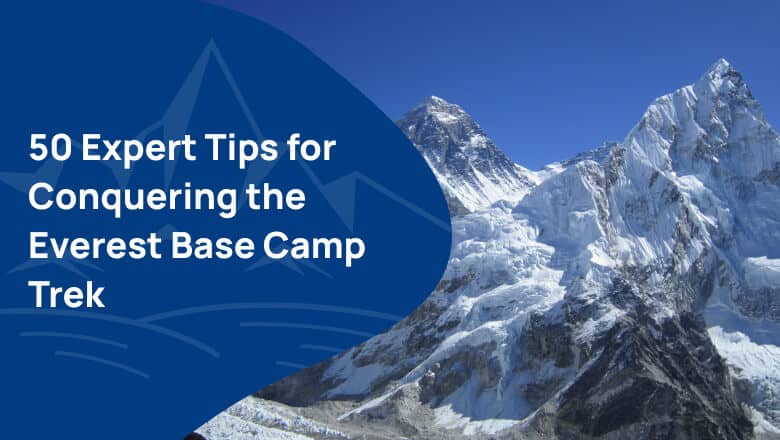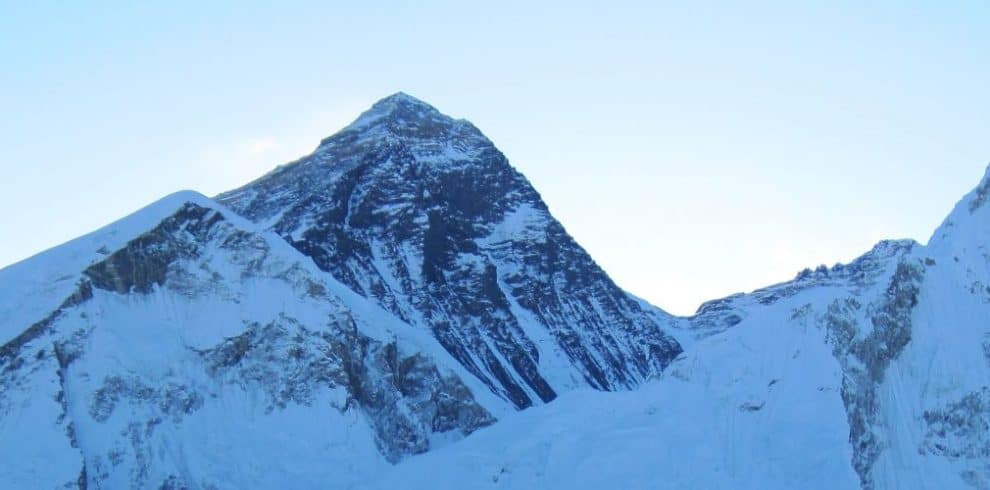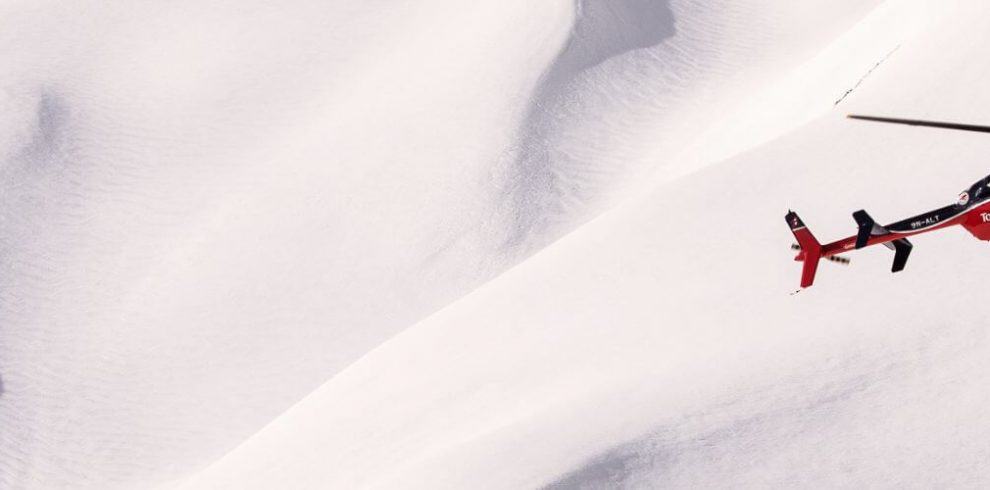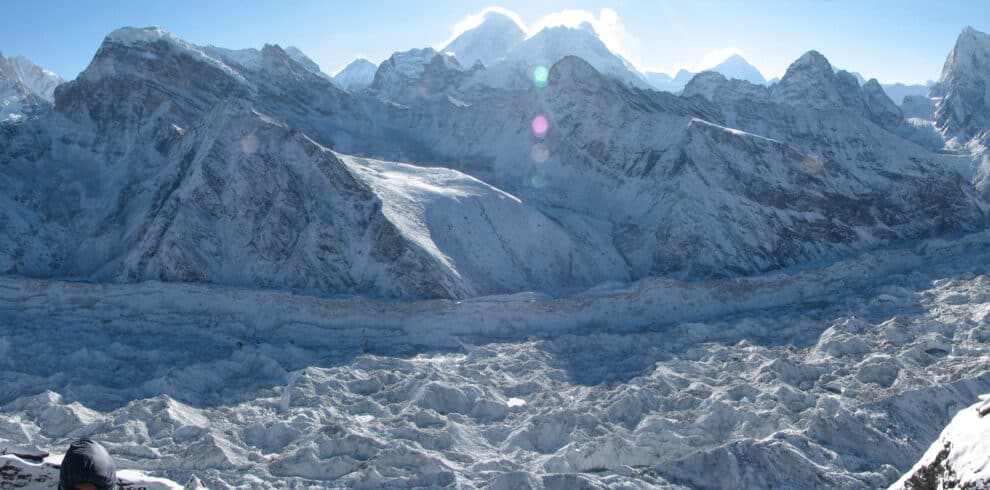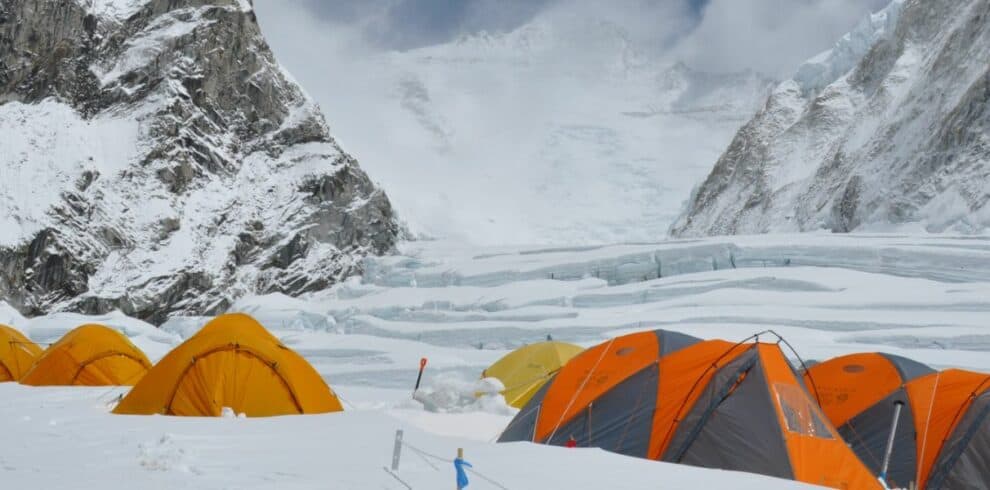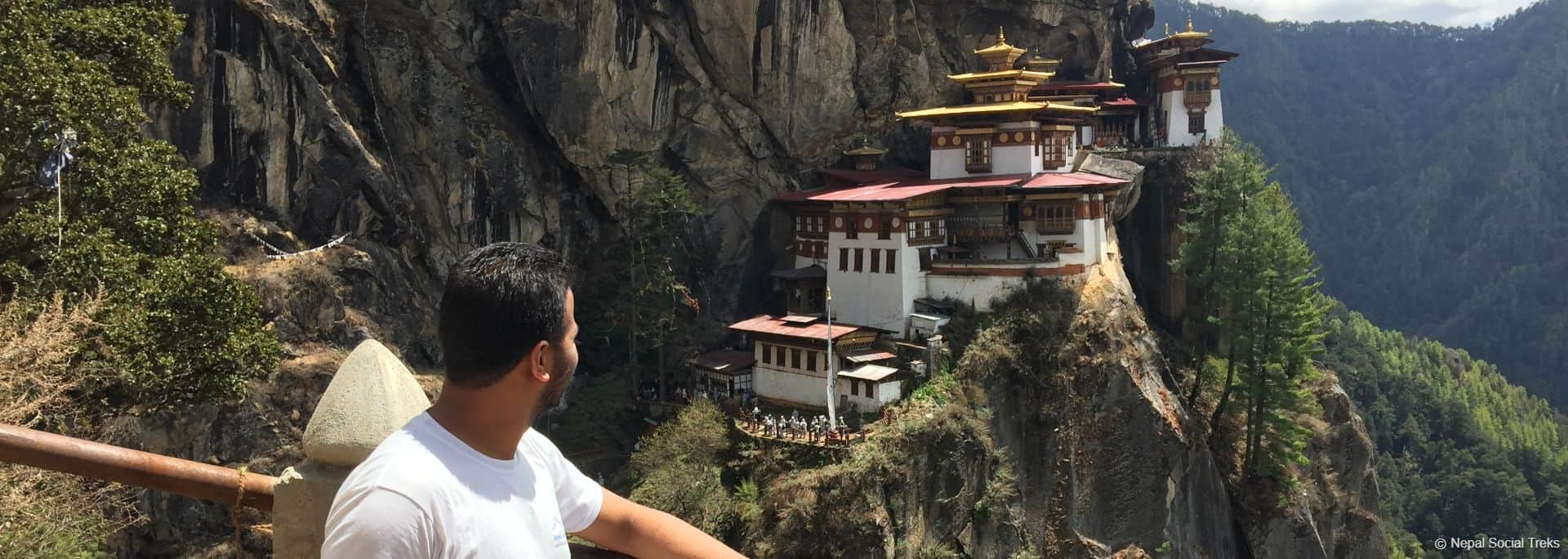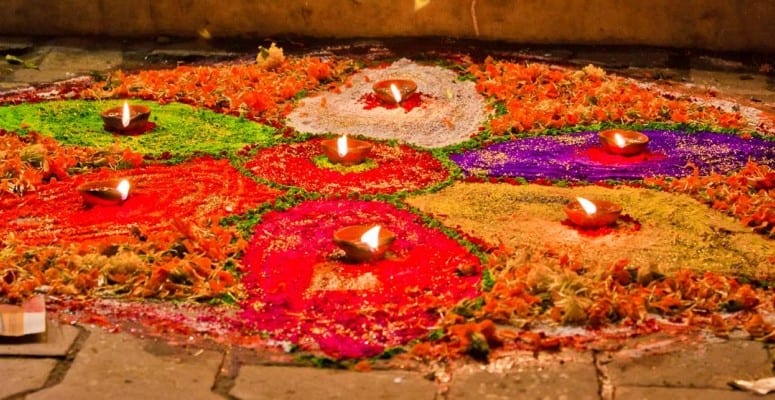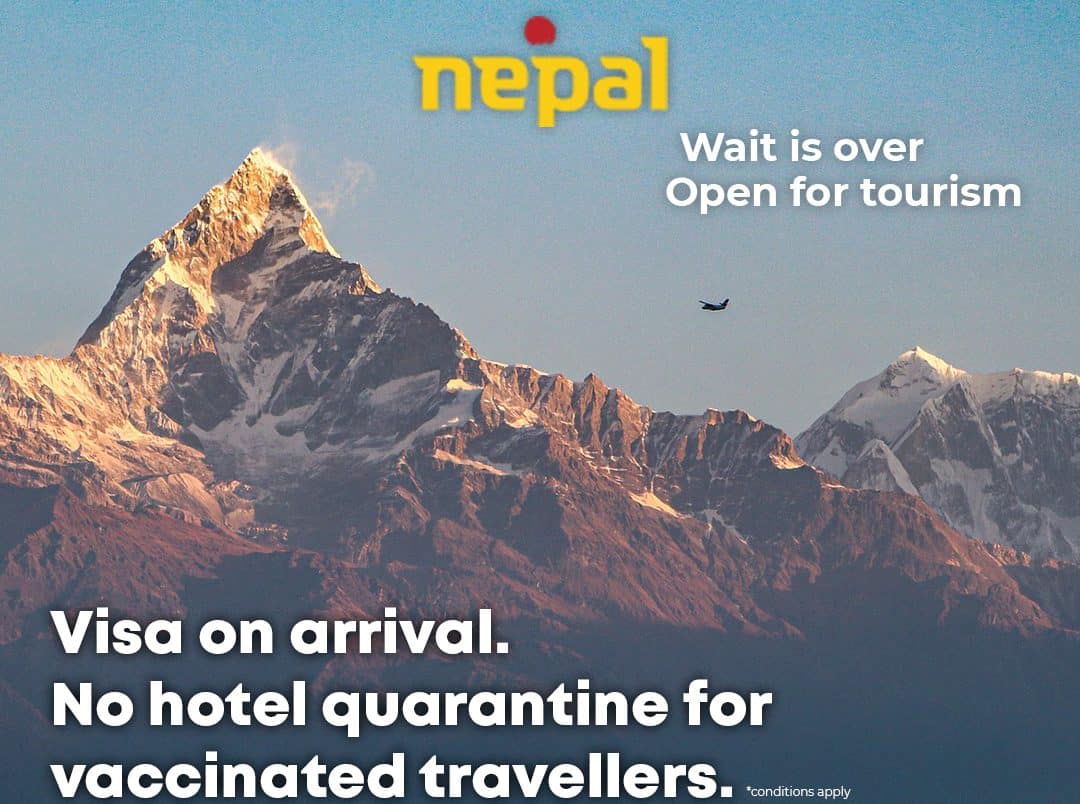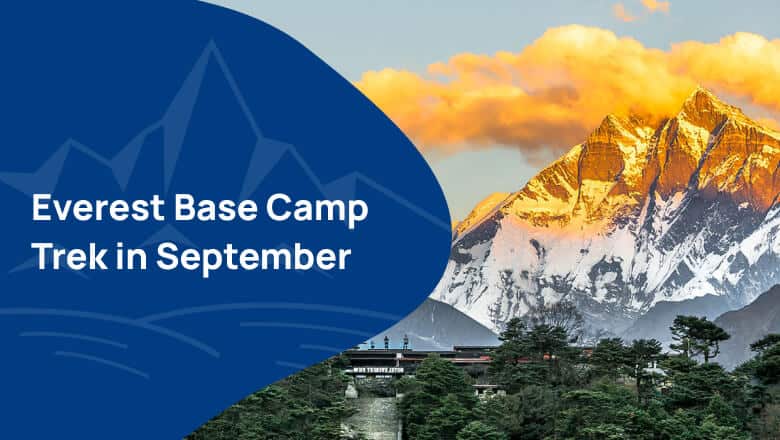Every trekker’s dream is to trek to Everest Base Camp at least once in their lifetime. So it might be probably everyone’s first priority to accomplish it more than any other trekking destination in Nepal.
And why not?
People are drawn to this trek for many reasons. The stunning scenery you pass on the Everest Base Camp trek every step of the way through is undoubtedly one of its key attractions. You’ll be in awe of the breathtaking backdrop of the Himalayas’ imposing peaks, including Mount Everest. In addition, the trek offers a look into a way of life that has not altered for centuries as it passes through isolated villages and past glacier lakes.
To prepare for the trek and make the most of your trip to the foot of the tallest mountain in the world, you should know a few trekking guidelines before beginning this lovely journey.
Therefore, in this article, we will be discussing 50 essential tips that range from beginner to expert level, which will help you conquer the Everest Base Camp trek.
I have previously written extensive articles about Everest Base Camp, including articles on its overview, challenges, favourable seasons, and costs. If you haven’t read them already, I suggest you do so because they are the foundation for every piece of advice that I’m about to give you.
Check out all those articles here- Everest Travel Guide
Contents
- Planning and Preparation Tips for Everest Base Camp
- Trekking Tips
- Gear Tips
- Tea House Tips
- Everest Base Camp Trek
- Altitude Sickness Tips
- Miscellaneous Tips
- Conclusion
- Ready to Book Trips Now?
- Everest Base Camp Luxury Heli Trek
- Everest Base Camp Trek
- Everest Panorama View Trek
- Everest View Trek
- Jiri to Everest Base Camp
Planning and Preparation Tips for Everest Base Camp
- Start training early: The Everest Base Camp trek is physically demanding, and you must be in good shape to complete it. Start training at least three months before your trip, focusing on cardio exercises like hiking, running, and cycling.
- Choose the right time of year: The best time to trek to Everest Base Camp is from March to May and September to November when the weather is dry, and the skies are clear.
- Get the necessary permits: You will need several permits to trek to Everest Base Camp, including a Sagarmatha National Park permit and a Khumbu Pasang Lhamu Rural Municipality fee.
- Book with a reputable company: Many trekking companies offer trips to Everest Base Camp, but not all are created equal. Do your research and choose a company with a good reputation for safety and reliability.
- Pack wisely: You will need to carry all your gear with you on the trek, so pack light but smart. Focus on high-quality, lightweight gear that will keep you warm and dry.
Before we move on to the next topic.
Do you have any question about trip to Nepal?
Tell us about your trip to Nepal and what you expect from it. We will answer your questions in 24 hours and help you design a trip with a comfortable itinerary to meet your needs best.
Trekking Tips
- Take it slow: The best approach to prevent altitude sickness on the Everest Base Camp trip is to acclimatize properly. Therefore, slow down and take your time, especially as you ascend.
- Remain hydrated: Drink a lot of water during the day because it’s easy to dehydrate at high altitudes.
- Eat well: Your body will use a lot of energy while hiking, so make sure you eat enough to keep it going. Focus on consuming foods that are easy to digest and rich in protein and carbs.
- Layer your clothes.: The weather on a trek can change a lot, so bring clothes that you can add or take off as needed.
- Use sunscreen, a hat, and sunglasses to shield yourself from the sun’s rays because they are strong at high altitudes.
- Bring a water bottle you can reuse: Bottled water is expensive and bad for the environment, so bring a bottle you can fill up along the way.
- Use trekking poles: Trekking poles can help reduce the impact on your knees and improve your balance on uneven terrain.
- Take breaks often: Don’t push yourself too hard – take regular breaks to rest, hydrate, and enjoy the scenery.
- Listen to your body: If you start to feel sick or unwell, listen to your body and take appropriate action. It’s better to rest or descend than to push yourself too hard and risk serious health problems.
- Respect the environment: The Everest Base Camp trek takes you through some of the most pristine natural landscapes in the world. Be sure to respect the environment by staying on the trail, not littering, and following Leave No Trace principles.
Gear Tips
- Get good quality hiking boots: Spend money on quality hiking boots that fit properly and offer good support because you will be walking hours and hours each day.
- Carry a sleeping bag that can withstand at least -10°C so you can be warm and comfortable throughout the chilly evenings of the walk.
- Bring a warm jacket: Temperatures can drop dramatically as you climb higher and higher, so bring a warm jacket that can protect you from the cold and wind.
- Bring a durable backpack: You’ll need one that can store all your gear and is comfortable and light. Therefore, choose one with a belted waist for additional support and adjustable straps.
- Bring a headlamp: The trek includes several early morning starts and late afternoon finishes, so bring a headlamp with extra batteries to help you find your way in the dark.
- Carry a first aid kit: A basic first aid kit with essentials like bandages, painkillers, and antiseptic wipes can be a lifesaver in an emergency.
- Bring a waterproof bag cover: Nepal is known for its unpredictable weather, so protect your gear by packing a waterproof bag cover or lining.
- Don’t forget the toilet paper: Many tea houses along the trek don’t provide toilet paper, so bring your own to avoid uncomfortable situations.
- Pack snacks: Snacks like energy bars, trail mix, and chocolate can help boost your energy and mood on the trek.
- Bring a camera: The Everest Base Camp trek is full of incredible photo opportunities, so don’t forget to bring a camera to capture all the memories.
Tea House Tips
- Stay in tea houses: The Everest Base Camp trek includes several tea houses where you can stay overnight. These tea houses provide basic accommodation, meals, and a chance to interact with other trekkers.
- Book early: Tea houses can get crowded during peak trekking season, so book your accommodation in advance to avoid disappointment.
- Don’t be afraid to negotiate: Tea house prices can vary depending on the season and location, so don’t be afraid to negotiate for a better price.
- Bring your own sleeping bag liner: Many tea houses don’t provide clean bedding, so bring your own sleeping bag liner for added comfort and hygiene.
- Order the local food: The local food in Nepal is delicious and affordable. Try dishes like dal bhat, momos, and thukpa for a taste of traditional Nepali cuisine.
- Be respectful of other guests: Tea houses can get noisy, so be respectful of other guests by keeping your voice down and avoiding loud music or partying.
- Tip your hosts: It’s customary to tip your tea house hosts for their hospitality and hard work.
Book an Everest Base Camp Trek Now!
Altitude Sickness Tips
- Knowing the symptoms and signs of altitude sickness is essential since it can be severe and life-threatening. Headache, nausea, dizziness, and shortness of breath are typical symptoms.
- Acclimate correctly: Acclimate properly is the best approach to prevent altitude sickness. It means taking your time, moving gently, and staying at higher elevations for at least an additional day to allow your body to acclimate.
- Be hydrated: By keeping your body hydrated, drinking enough of water can help prevent altitude sickness.
- Avoid drinking and smoking: It’s better to avoid both when walking because they might worsen altitude sickness.
- Use Diamox to avoid altitude sickness: Diamox is a drug that can do just that. Before taking it, discuss it with your doctor, and make sure you take it as prescribed.
- Descend if necessary: If you start to experience severe symptoms of altitude sickness, the best thing to do is to descend to a lower altitude as quickly as possible.
Miscellaneous Tips
- Bring cash: Many tea houses and shops along the trek don’t accept credit cards, so bring plenty of cash to pay for food, accommodation, and miscellaneous expenses.
- Carry a water filter or purification tablet: Drinking water sources along the trek may be unsafe, so carrying either a water filter or a purification tablet is important.
- Take breaks and listen to your body: The Everest Base Camp trek is physically demanding, so it’s important to take breaks. If you’re feeling tired or unwell, take a rest day or cut your trek short.
- Respect the local culture: Nepal is a diverse and culturally rich country, so respect local customs and traditions. Also, ask for permission before taking photos of people or religious sites.
- Hire a local guide: Hiring a local guide can be a great way to learn more about the culture and history of the area, as well as to ensure your safety and well-being during the trek.
- Bring a map and compass: While the trek is well-marked, bringing one in case of emergencies or if you get lost is still a good idea.
- Pack light: You’ll be carrying your backpack for hours each day, so pack light and only bring essentials.
- Stay positive: The Everest Base Camp trek can be physically and mentally challenging, but staying positive and focused on your goal can help you overcome any obstacles.
- Take care of your feet: You will travel primarily on your feet throughout the journey. Therefore, wear supportive, comfortable shoes, and switch out your socks periodically to avoid blisters.
- Carry a satellite phone or rent one: While the walk offers the chance to unplug electronics and appreciates nature, it’s still necessary to be in touch with family and friends in case of an emergency.
- Leave no trace: The Everest Base Camp trek is a stunning and vulnerable environment, so be careful to pack out all of your waste and respect nature.
- Enjoy the journey: Enjoy the breathtaking landscape, meet new people, and create lifelong memories.
Conclusion
That’s all trekkers.
By following these 50 tips, you can ensure a safe, enjoyable, and unforgettable experience on this iconic trek. If you have already been to Everest and have more successful travel tips and ideas, don’t forget to mention those in the comments below.
Ready to Book Trips Now?
The Everest Base Camp luxury heli Trek is designed for people who are short on time but still want to…
Everest Base Camp Trek is a classic trekking adventure in the foothills of the world’s highest mountain, Mount Everest. Trudging…
The Everest View Trek is a short trekking alternative in the Everest region. It offers stunning views of the world's…
Everest View Trek is probably the most famous trek in the Himalayan region of Nepal. It is one of the…
The majority of people keen on trekking who visit Nepal who want to soak in the Everest experience choose the…

